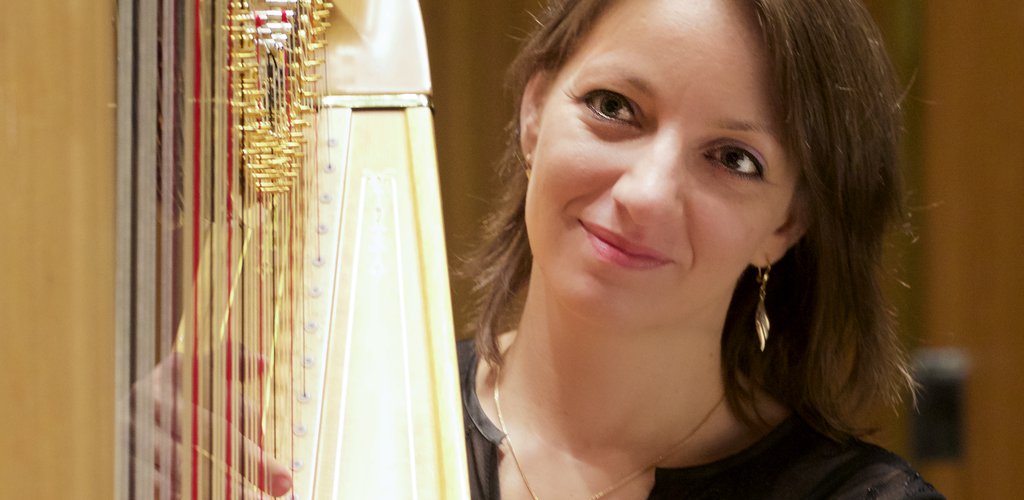Gilad Cohen: Trio for a Spry Clarinet, Weeping Cello and Ruminating Harp
“I am incredibly pleased to have found this trio: we will be premiering a piece in Hungary which stands the test of time, and which the majority of the audience will listen to over and over again at home, on YouTube. The Israeli Cohen, born in 1980, has amassed a vast number of prizes despite his youth. He has said, describing his trio, that he wanted to use these three instruments in a way that is a complete departure from the usual. He treats the clarinet above all as a Klezmer instrument; with the cello, he focuses on the sounds of the electric guitar; and numerous times he employs the harp as a member of the rhythm section, in addition to calling upon it for some incredible melodies, perhaps with a touch of Pink Floyd. He also, however, allows the harp to stay true to itself with impressionist sounds; though he does ask the musicians not to play too nicely, and instead to fool around with their instruments. All three movements are completely different in their moods. We are sure to surprise the audience with each, and will prove once again that contemporary music is a good thing, and is worth listening to!” (Ágnes Polónyi, harpist)
Galina Ustvolskaya: Composition 1 ("Dona nobis pacem”)
“In this piece, Ustvolskaya uses the music to describe deep emotions. The sound, the composition and the expression are contemporary – it will take your breath away! I have played the piece several times already, and from the first moment on, we were existing and creating in true spiritual harmony with my chamber group partners. The pianist may begin striking his instrument with both arms. The piccolo plays some of the highest notes, with the tuba providing some of the lowest; the extremes in terms of dynamics serve only to amplify the powerful thoughts of the music. The piece is an honest and inspired description of the search for peace and happiness. It is not the musicians the audience should be focusing on during the performance; rather, it is the music itself which is to be sensed, for it carries incredibly honest messages for each of us.” (József Bazsinka, tuba player)
György Orbán: Piano Trio
“The composer’s key premise is that no matter the genre, music is good if people want to listen to it time and time again – and this also applies to contemporary music. The nostalgic melody of the first movement, heard from a distance, is counterbalanced by the sounds of fighting horns and boisterous riding rhythms. The main theme of the second movement is presented through the strumming of the violin and the cello, followed by the variations, which were written evincing a great deal of imagination. The third movement features silence and a terrifying and passionate night, while the fourth is swinging, masterful and playful. I might even say that the main theme is jazz-like, while the secondary theme is a melody that you will gladly hum over and over.” (István Kádár, violinist)
Philip Glass: String Quartet No. 2
“Glass is one of those musicians who has had the most profound impact on the 20th century, and is also one of the most innovative. His String Quarter No. 2 was originally composed as a piece of theatre music, akin to Beckett’s work of similar title. Only later did Glass decide to rework the piece and turn it into a stand-alone quartet. This is a lyrical – almost romantic – piece, composed for a traditional string quartet, which reflects the stylistic elements of minimalist music with its strong, pronounced melodies and their remarkably simple arrangement. The minimalist style is known for its reliance on simple and repetitive elements which are easy to interpret. Highly popular to this day, minimalist music relies on the fewest components possible, and is characterised by simple notes and melodies. The goal is not to over-explain anything: the goal is to achieve a perfect balance.” (Mária Gál-Tamási, violinist)
György Kurtág: Bagatelles
“It is always a tremendous challenge to play Kurtág: his haiku-like miniature works, of just a few minutes each, are not only incredibly challenging in terms of musical technique, but also demand a truly unusual level of intense mental concentration on the part of the performer. In this piece, it is not just the register of the notes, nor their duration, that has significance: in each and every moment you have colours, hints of pauses waiting for one another, and messages which are barely perceptible: Kurtág is hoping the audience listening will devote themselves to the music and will come ready for this expedition. A trio featuring the piano, the flute and the double bass: quite an unusual combination of instruments!” (Zsolt Fejérvári, double bass player)
